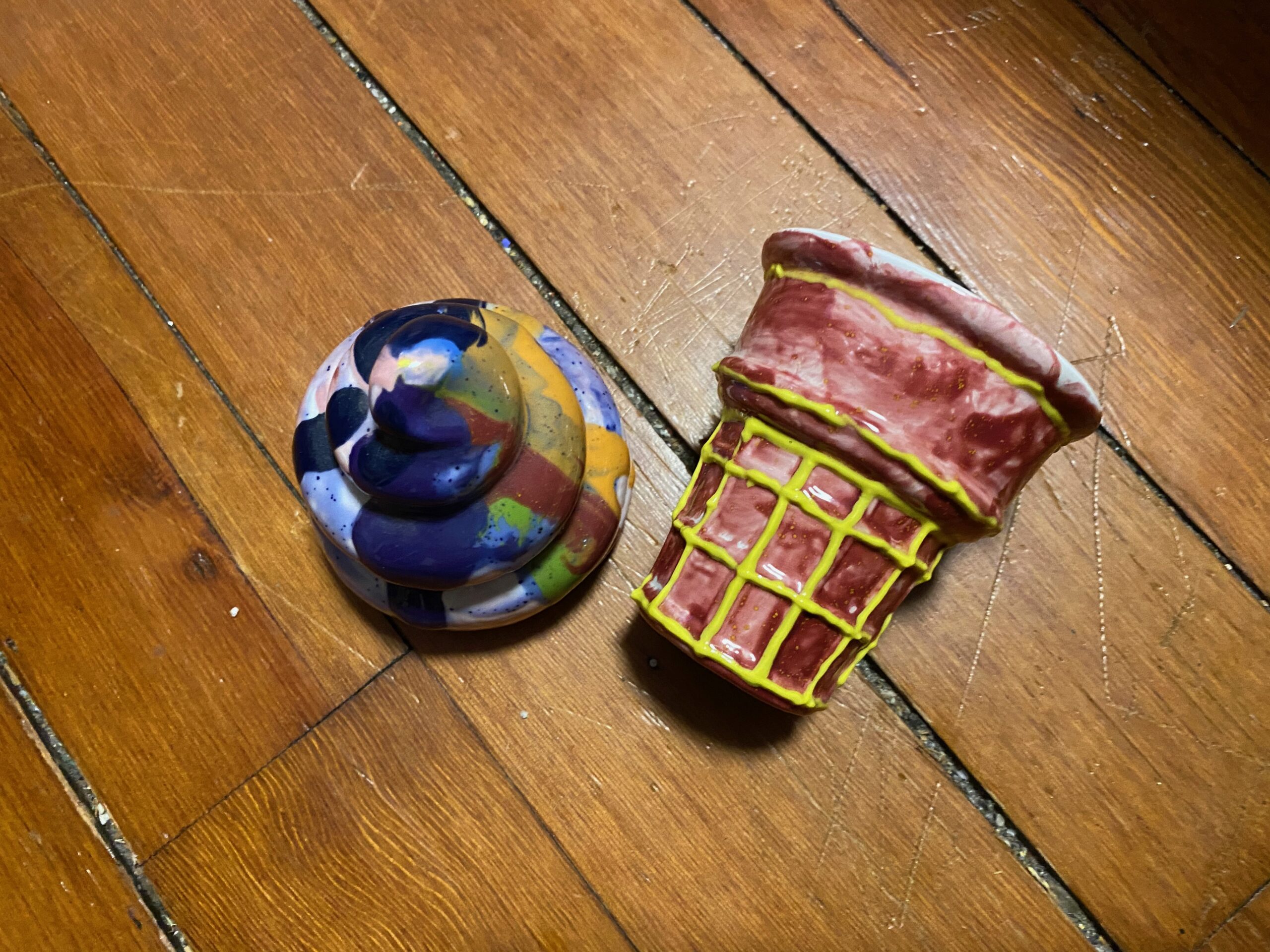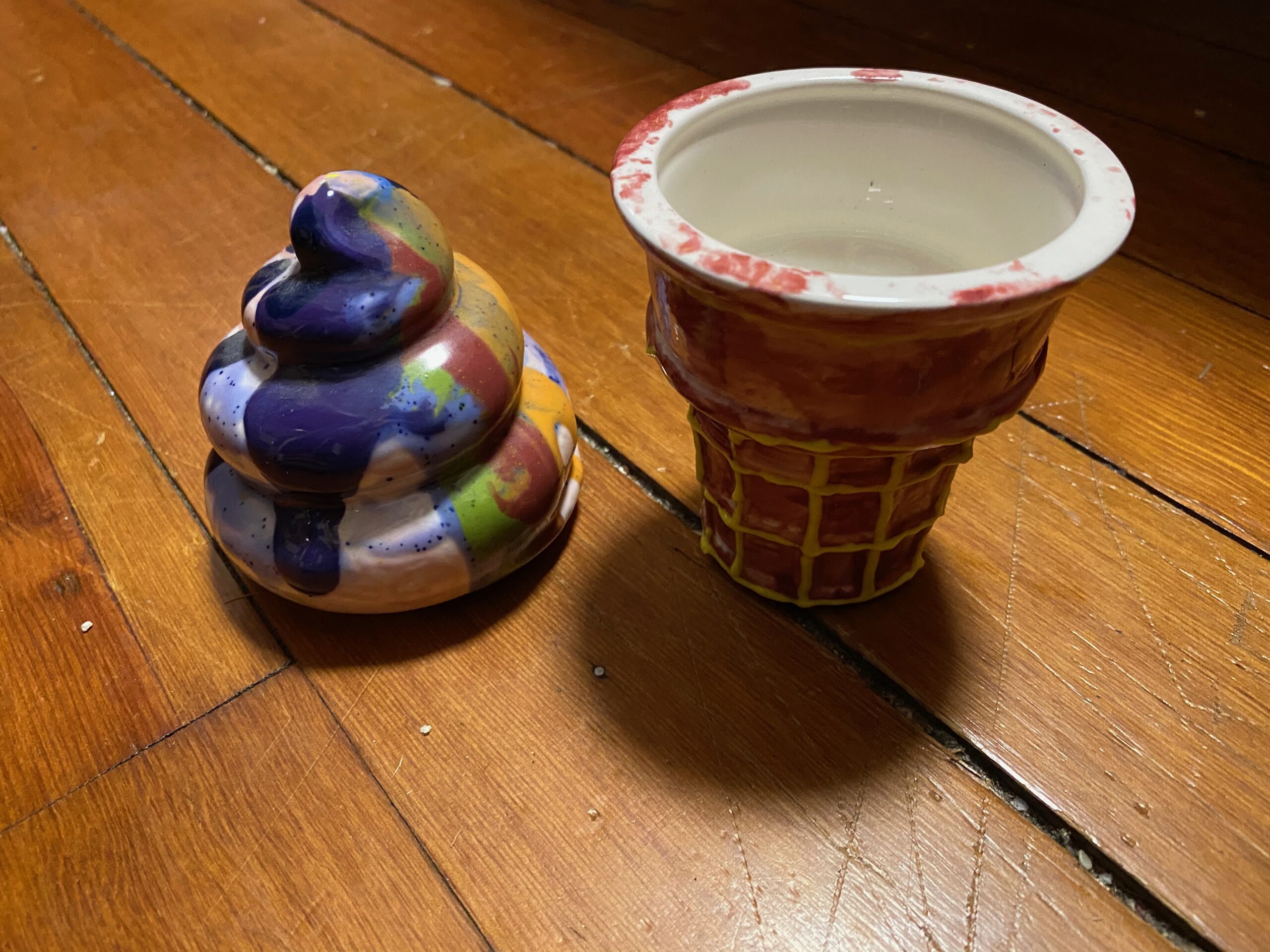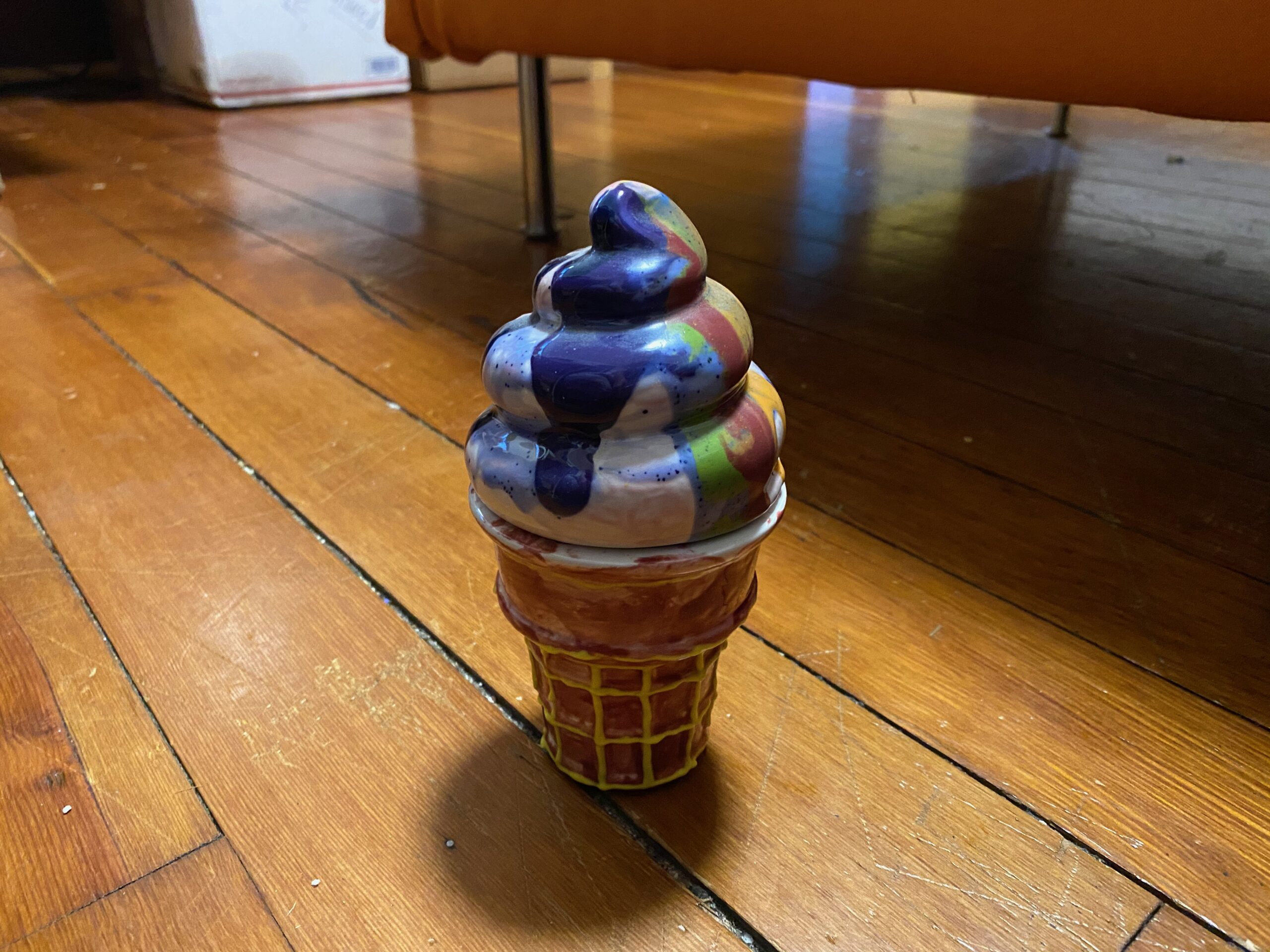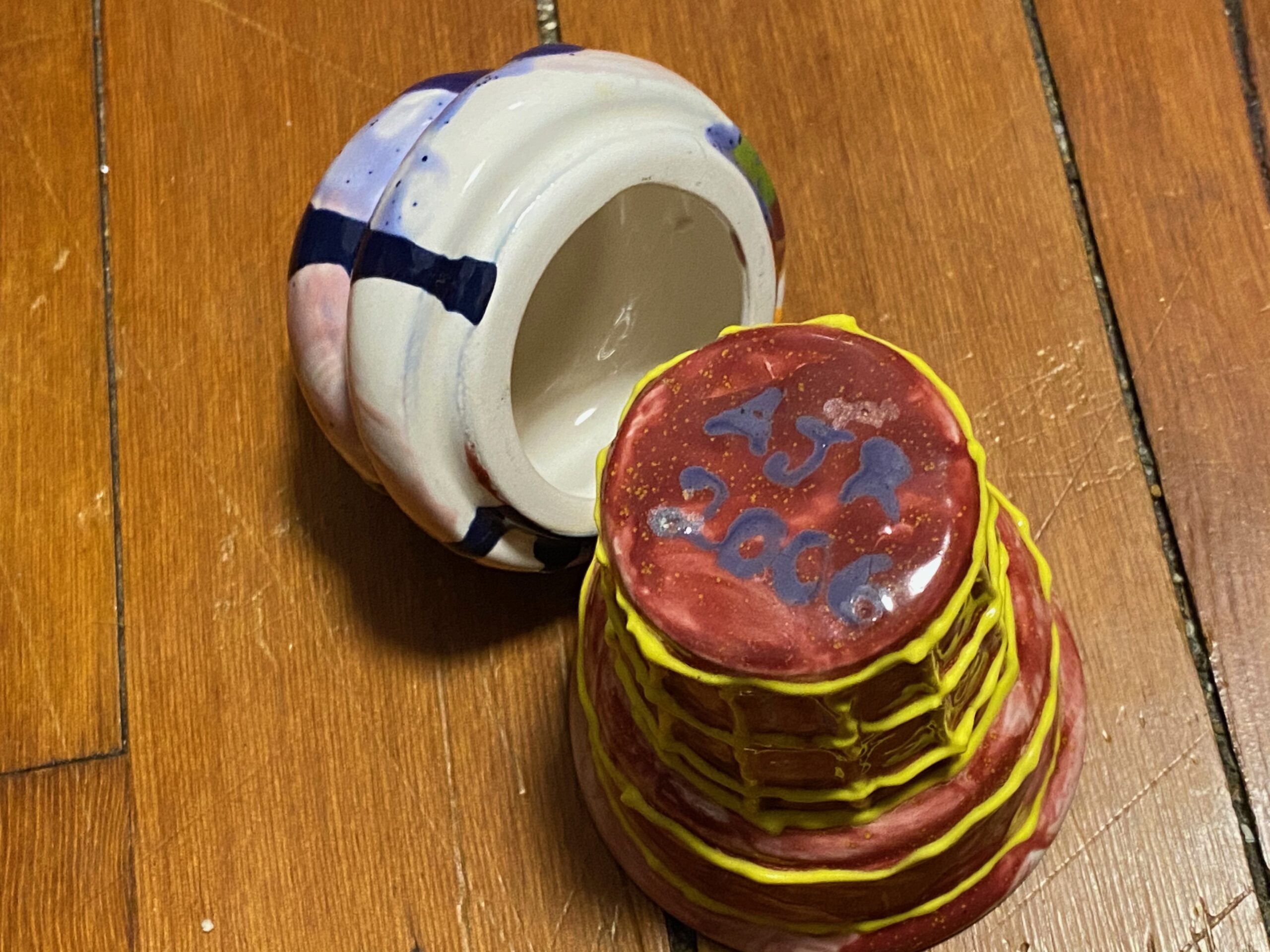Paint-it-Yourself Pottery (2006) ice cream: 139,100 ppm Lead (90 ppm & up is unsafe for kids but the shop owner said the glazes were “Lead-free”)
For those new to the Lead Safe Mama website:
Tamara Rubin is a multiple-federal-award-winning independent advocate for childhood Lead poisoning prevention and consumer goods safety, and a documentary filmmaker. She is also a mother of Lead-poisoned children (two of her four sons were acutely Lead-poisoned in 2005).
- Tamara owns and runs Lead Safe Mama, LLC — a unique community collaborative woman-owned small business for childhood Lead poisoning prevention and consumer goods safety.
- Since July 2022, the work of Lead Safe Mama, LLC has been responsible for six product recalls (FDA and CPSC).
- All test results reported on this website are science-based, accurate, and replicable.
- Please check out our press page to see some of the news coverage of our work, linked here.
June 6, 2021 — Sunday
This is a very personal piece for me, as my son A.J. (who is now 18-years-old) made this for his 4th birthday in 2006 (after having already been Lead-poisoned at age 3).
After the kids were poisoned (in August of 2005), we decided to stop getting presents for the kids’ birthdays and holidays (because everything we owned had been contaminated when the boys were poisoned and it had been such a PITA to clean everything that I just wanted fewer things in our home altogether)! Instead, we chose to DO safe and fun (and ostensibly LEAD-FREE) activities for each of their birthdays. So for A.J., we ended up deciding on a paint-it-yourself pottery event with the whole family that year (2006, and at least once a year for several years after)… That is until I had the opportunity to use an XRF instrument and tested the pieces we had made at the local shop!
We were horrified to learn these pieces were super high in Lead.
When I first tested these (I think it must have been 2009 or 2010, around the time I started testing consumer goods), I completely freaked out as there were several pieces we painted at that shop that we used with food on a daily basis — because the shop owner had assured us they were “completely Lead-free and safe to use for food.” One was a dish (like a platter) that I would often serve the kids treats on because it was a “special plate” they had decorated themselves. The second piece was a giant mug that I drank from all day/ every day of my pregnancy with Charlie in 2007 and 2008 (and after his birth, as well!). It was only later that I learned the mug I was drinking from (to make sure I was getting enough to drink during my pregnancy) was covered in a glaze that contained Lead at levels above 80,000 ppm. I tested positive for Lead in my blood shortly before giving birth to Charlie.
90 ppm Lead (or higher) is unsafe for kids. This ceramic hand-painted ice cream cone (box) tested positive for Lead at levels higher than 139,000 ppm!
The amount of Lead considered unsafe for items intended for use by children and made today is anything 90 ppm Lead or higher in the paint, glaze, or coating, and anything 100 ppm Lead or higher in the substrate. I would not consider this item safe for use by children, nor would I consider the glaze used at this store safe for children (or any humans for that matter) in the artistic process. Most important to know for context is that an item with Lead levels this high would be illegal if manufactured and sold today for use by children. The presence of Lead and the level of Lead in the glaze varied by color.
The concern for Lead in paint-it-yourself pottery goes far beyond the finished product.
If there is Lead in the glazes in use at a paint-it-yourself-pottery store (and this is not always the case, but you should definitely ask the owner of your local shop before you go — and if they say “ no,” be sure to determine how they know that and where they got that information), then there is likely Lead DUST (one of the most prevalent and dangerous forms of toxic Lead in our environment) all over the pottery shop as well.
This is all the more concerning because protective gear is never worn in these shops and it is also especially upsetting because these shops often host birthday parties and other events (wine-drinking pottery painting events for adults, for example) where food and beverages are consumed within the art space — therefore the participants are at risk of both inhalation and ingestion hazards from the dust created by the dried-but-not-yet-fired glazed pieces sitting on all of the shelves around these shops. (Not to mention hand-to-mouth activity while handling/ applying the Leaded glazes, like eating a cracker or cheese with a hand that just wiped away an errant smudge of glaze from your piece without washing your hands thoroughly first).
Is this still a problem in 2021?
Well… the owner of the particular shop we used to go to (in the Sellwood neighborhood of Portland) got cancer (not surprising given the likely chronic, high-level Lead exposure she unknowingly had from her work environment) and had to close her shop. Prior to the closing of this shop I did call her to tell her about the Lead I found in the glazes that she had assured us were “Lead-free” and that is when she told me she had cancer, needed to have her leg amputated, and would be closing the shop!
This was many years ago (maybe eight or 10 years ago), and since then I have tested many more recently-made paint-it-yourself-pottery pieces (all over the country). I have found that these newer pieces too often have high levels of Cadmium (in the reds, pinks, and oranges), but only rarely to have high levels of Lead.
I think with the implementation of the Consumer Product Safety Improvement Act (2008), stricter standards for art supplies (and expressly for art supplies used for activities and items intended to engage children) were likely put in place that impacted stores like this. I am actually not 100% certain how the new regulations have impacted awareness of potential hazards in all these stores specifically, so I am still cautious and recommend (in the absence of testing your specific piece) not using any paint-it-yourself-pottery pieces for food use. I also take that a step further and encourage people to choose anon-food-use item (like a piggy bank or figurine) to decorate if they do go to one of these stores (out of an abundance of caution AND in response to the persistently high Cadmium levels in some of the colors).
When tested with an XRF instrument, the ceramic ice cream cone pictured here showed the following readings:
#1.) On the yellow criss crosses
- Lead (Pb): 139,100 +/- 5,800 ppm
- Barium (Ba): 556 +/- 174 ppm
- Zirconium (Zr): 36,500 +/- 2,200 ppm
- Tin (Sn): 1,986 +/- 163 ppm
- Zinc (Zn): 331 +/- 60 ppm
- Iron (Fe): 1,150 +/- 261 ppm
#2.) On the purple at the top of the cone
- Lead (Pb): 72,600 +/- 3,200 ppm
- Cadmium (Cd): 272 +/- 46 ppm
- Zirconium (Zr): 1,770 +/- 119 ppm
- Tin (Sn): 33,000 +/- 2,400 ppm
- Zinc (Zn): 342 +/- 68 ppm
- Cobalt (Co): 3,797 +/- 368 ppm
- Iron (Fe): 1,349 +/- 308 ppm
- Indium (In): 303 +/- 53 ppm
Thank you for reading and sharing results. As always, please let me know if you have any questions and I will do my best to answer them personally as soon as I have a moment to do so.
Tamara Rubin
#LeadSafeMama


Never Miss an Important Article Again!
Join our Email List








Thank you for this. I’m a hobbyist potter trying to make sure everything is food safe. I only use glazes sold as food-safe by companies that have a major US presence (Amaco, Mayco, Speedball, Spectrum). You can look at the SDS (formerly MSDS) sheets, but you have to wonder if some contaminants/adulterants are getting through.
One of my giant pet peeves is labeling. To my knowledge, you can sell not-food-safe bowls & cups as “decorative,” but mid- and high-fire pottery tends to outlive us. It’s likely to be separated from its provenance information when it’s donated or sold in an estate sale. You can get or make little “not food safe” stamps for the clay, and I wish it were law to mark every vessel that could reasonably be mistaken for dinnerware with these.